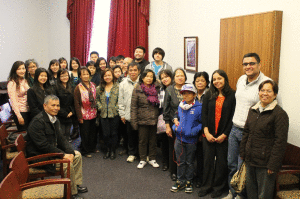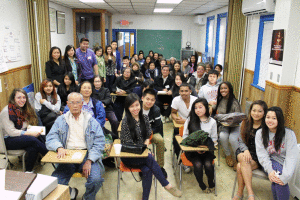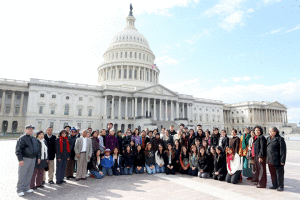“Will immigration reform help me reunite with my grandchildren?”
“My husband passed from cancer I wish there were more support services.”
“We want to take care of our family in harmony.”
On Tuesday, March 26, 2013, 60 youth and elders spoke up with these comments and questions. SEARAC, alongside the Cambodian Association of Greater Philadelphia, held an advocacy day where the group met with the White House Initiative on Asian Americans and Pacific Islanders, the federal agencies, and Congressional offices in Washington, DC.
It was incredibly inspiring this week to see elders speaking up, with local impact through the group of Cambodian-American elders we hosted, as well national as I followed coverage of the Supreme Court arguments on United States v. Windsor. Check out our fellow DEC partner SAGE’s blog for more great insights on the issue and more about Edie’s own amazing story.
The week isn’t even over yet, but I wanted to contribute five reflections on advocacy with Southeast Asian American elders:
- Trust is essential for building coalitions. The Cambodian Association of Greater Philadelphia (CAGP) has provided services to the community in Philadelphia, Pennsylvania for more than 30 years. CAGP holds the trust of the elders, providing important case management on their behalf and in turn intimately understand aging issues.
- Make sure you’re speaking the same language. Linguistic isolation is one of the most pressing issues in the Southeast Asian American community. In addition to being the trusted liaison, CAGP were effective translators for the community: since the elders were comfortable, the engagement between English and Khmer was smooth and fruitful discussion was had.
- Shared experiences build intergenerational movements. Intergenerational engagement is often difficult in many of our social movements. As a refugee community, many Southeast Asian American elders struggle to find the words to describe the trauma of the war experience and resettlement. However, this experience impressed on me the reality that communities are intergenerational – often with many generations living in the same household – and experiences and hardships are shared. Within the Southeast Asian American community, these intergenerational bonds even serve as critical lifelines: for instance, with younger individuals serving as connectors to mainstream services, or as elders who provide caregiving to young children.
- Build a knowledge base. As refugees fleeing persecution from governments and institutions back in Southeast Asia, many elders are reluctant to be civically engaged and directly address decision-makers with their concerns. To ensure that elders felt empowered, we held workshops with the participants prior to the trip to review advocacy as a basic right and principle. We also worked with elders from the ground up, having them identify issues and problems, then build connections to policies.
- And finally, don’t forget about physical needs. In our haste to attend our meetings, we rushed through break times. And, this did not only apply to elders. For instance, I learned that I am definitely a “hangry” person, a colloquial description for someone who gets cranky when hungry…
Even though I am an aging advocate, I know that there are many things elders can articulate much better than I can – and they should absolutely do so. It is critical that we continue to create channels and foster elder advocacy, especially for elders who are linguistically isolated and face cultural barriers to access. In the near future, I hope to see many more elders advocating in the halls of Congress, in front of the Supreme Court, within the federal government, and all the spaces in between!





